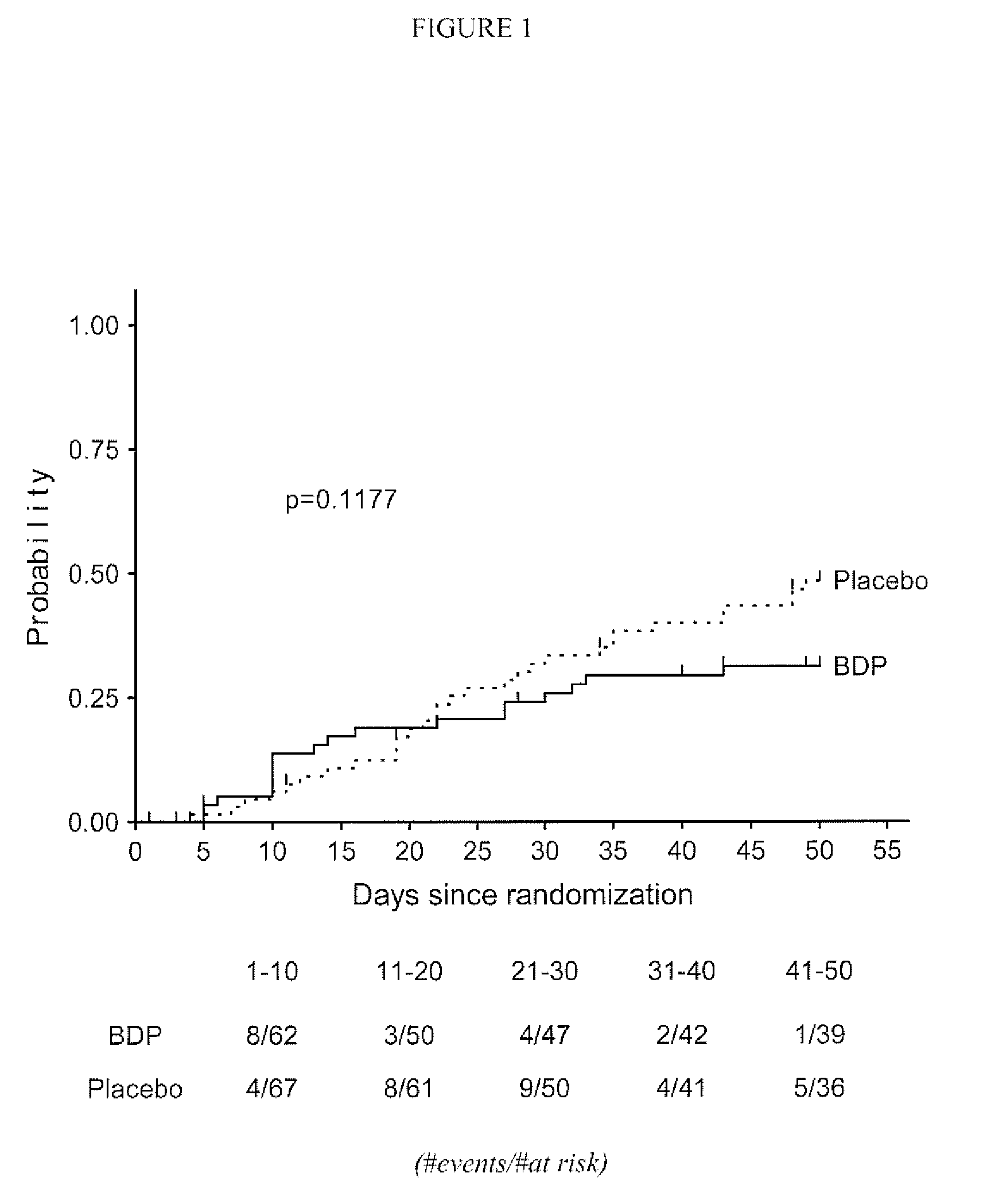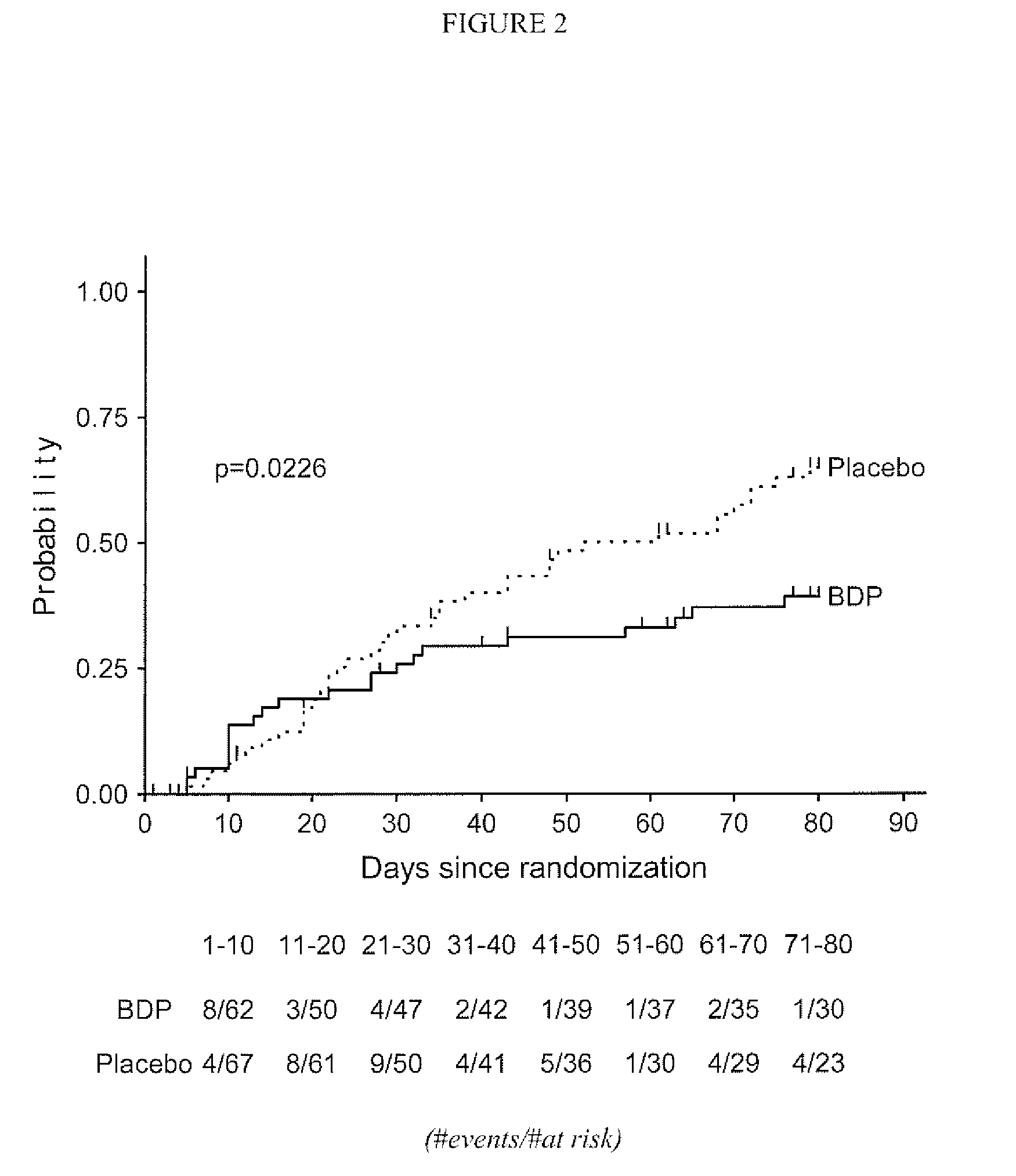Method of long-term treatment of graft-versus-host disease using topical active corticosteroids
- Summary
- Abstract
- Description
- Claims
- Application Information
AI Technical Summary
Benefits of technology
Problems solved by technology
Method used
Image
Examples
examples
[0045]A subsequent study was undertaken to assess the effect of a longer term treatment of patients with grade II Graft vs. Host Disease with gastrointestinal symptoms regimen with orally administered BDP in conjunction with ten days of high-dose prednisone therapy. The primary objective of this multi-center study was to compare the efficacy, defined as time to treatment failure, of an oral BDP regimen (1 mg / kg / day prednisone for 10 days plus 2 mg oral BDP q.i.d. for 50 days) with the efficacy of standard of care (1 mg / kg / day of oral prednisone administered for 10 days plus matching placebo tablets for 50 days) in patients with Grade II graft versus host disease (GVHD) with gastrointestinal (GI) symptoms. The Secondary objectives of the study were:[0046]1. To compare the proportion of treatment failures in the two groups on Study Days 10, 30, 50, 60, and 80.[0047]2. To compare the treatment groups with respect to cumulative systemic corticosteroid exposure.[0048]3. To compare the tr...
PUM
 Login to View More
Login to View More Abstract
Description
Claims
Application Information
 Login to View More
Login to View More - R&D
- Intellectual Property
- Life Sciences
- Materials
- Tech Scout
- Unparalleled Data Quality
- Higher Quality Content
- 60% Fewer Hallucinations
Browse by: Latest US Patents, China's latest patents, Technical Efficacy Thesaurus, Application Domain, Technology Topic, Popular Technical Reports.
© 2025 PatSnap. All rights reserved.Legal|Privacy policy|Modern Slavery Act Transparency Statement|Sitemap|About US| Contact US: help@patsnap.com



